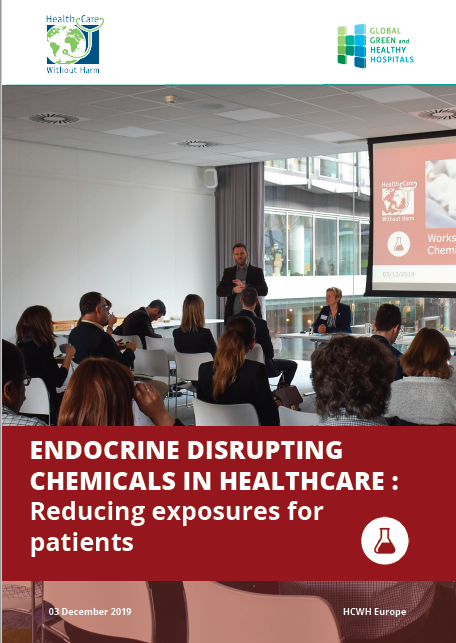We have known for decades that certain hazardous Endocrine Disrupting Chemicals (EDCs) leach out of medical devices; Bisphenol A (BPA) and phthalates (notably DEHP) are examples of hazardous substances often found in medical devices that are of particular concern due to their endocrine disrupting properties. Several concerns have been raised about patients’ high risk of exposure to such chemicals during medical treatment and the detrimental long-term effects on patients’ health. Many healthcare facilities around the world are already switching to safer and more cost-effective medical devices that do not contain PVC, DEHP, and BPA.
In December, Health Care Without Harm Europe brought together policy makers, healthcare providers, and medical device manufacturers in Brussels to discuss strategies to tackle this issue and reduce patient exposures to EDCs.
The main objective of this workshop was to address the implementation of the Medical Devices Regulation (MDR), focusing on new provisions that should help phase out Carcinogenic, Mutagenic, and Reprotoxic chemicals (CMRs) and EDCs in medical devices when safer alternatives are available and technically feasible. HCWH Europe invited a range of relevant stakeholders to discuss:
- The current state of play for EDCs in medical devices (with a focus on DEHP and BPA)
- The opportunities, challenges, and barriers to substitution, including a focus on healthcare procurement
- How we can increase commitment and action from all stakeholders to reduce patients’ exposure to harmful chemicals, particularly for vulnerable groups
Access the workshop report here
Access the workshop report to discover the featured presentations and learn more about the discussion on how to increase commitment and action from all stakeholders to reduce patients’ exposure to EDCs.
At this event, HCWH Europe also launched the 2nd edition of Non-toxic Healthcare; with this updated version of report, we hope to further raise awareness and accelerate the shift towards substitution of harmful substances within the European healthcare sector, supported by research, evidence, and collaboration. This report contains new evidence of DEHP and BPA hazards for human health and exposure through medical devices, an update on the European legal framework for hazardous chemicals in medical devices, and a new chapter on the health impact of plastics in healthcare.

